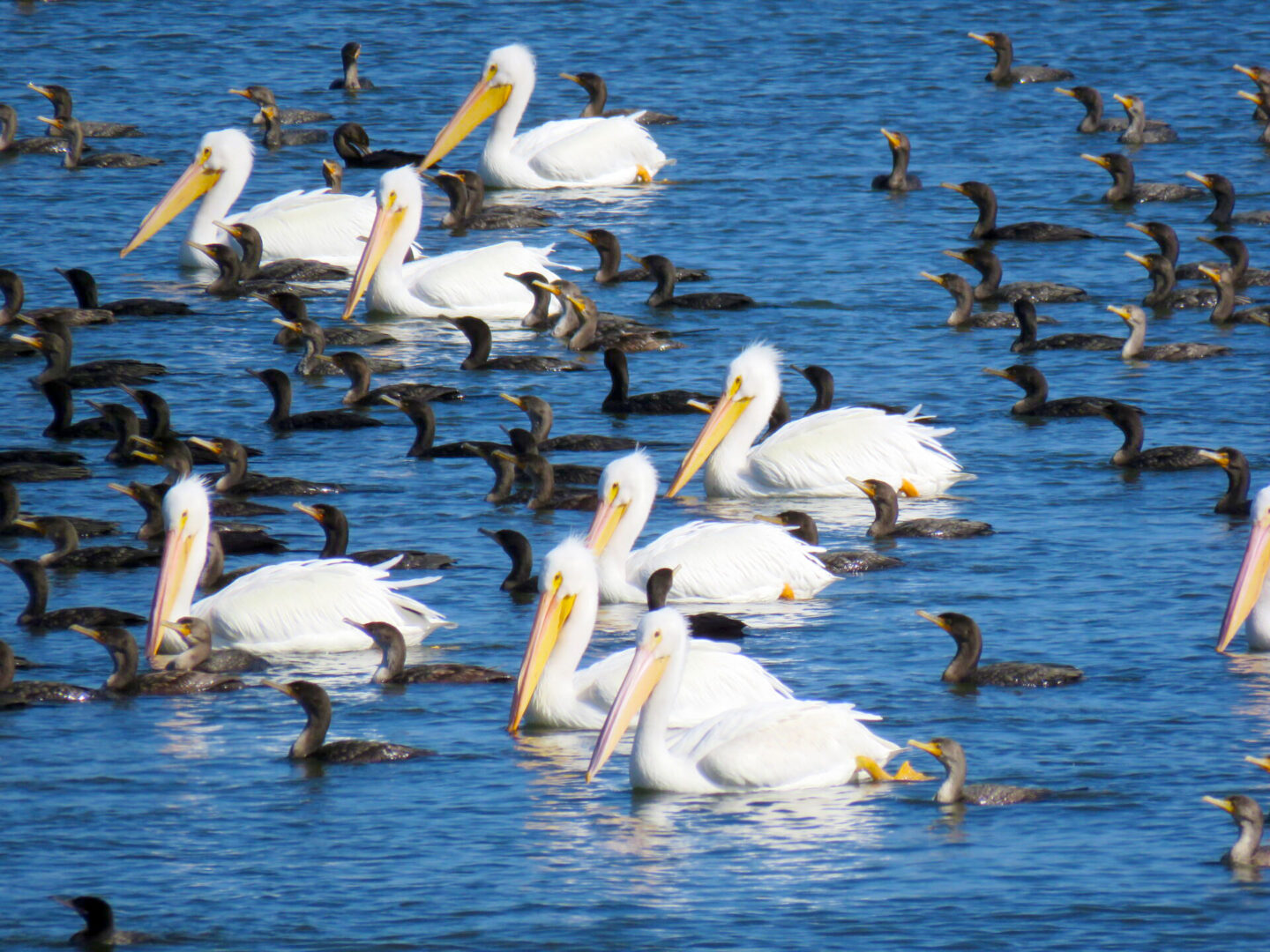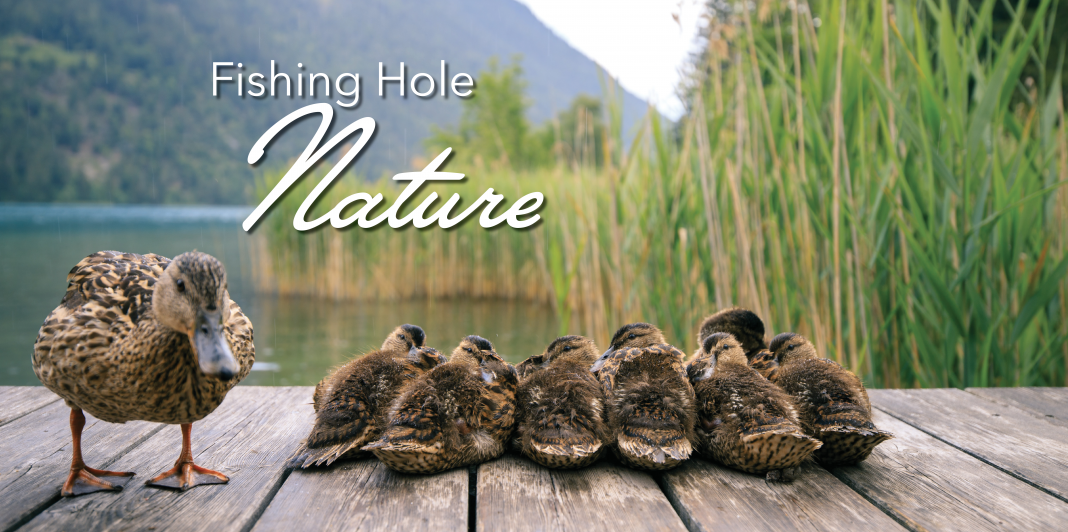Fishin’ Hole Nature: Winter Bird Rafts – A Collective Harmony

“Birds of a feather flock together”. That’s the saying, but it’s not always the case. Bird behavior in winter can be very different than in summer, and some of the wonderful winter spectacles on East Texas lakes are the large flotillas of different bird species that come together to hunt. This is called a bird raft, and can be seen from December through March. These rafts are often made up of cormorants, white pelicans, gulls and terns, and all these birds hunt together as one ‘flock’! A few scout birds flying over head will spot the subtle ripples of a large school of fish, and the birds drop down to the water. Other bird species watch and join, and the fish round-up begins! The entire raft zigzags one way then the other in a cooperative effort to herd and catch a meal. When they decide to take off for a better spot, the sound of a thousand wing-beats fills the air!
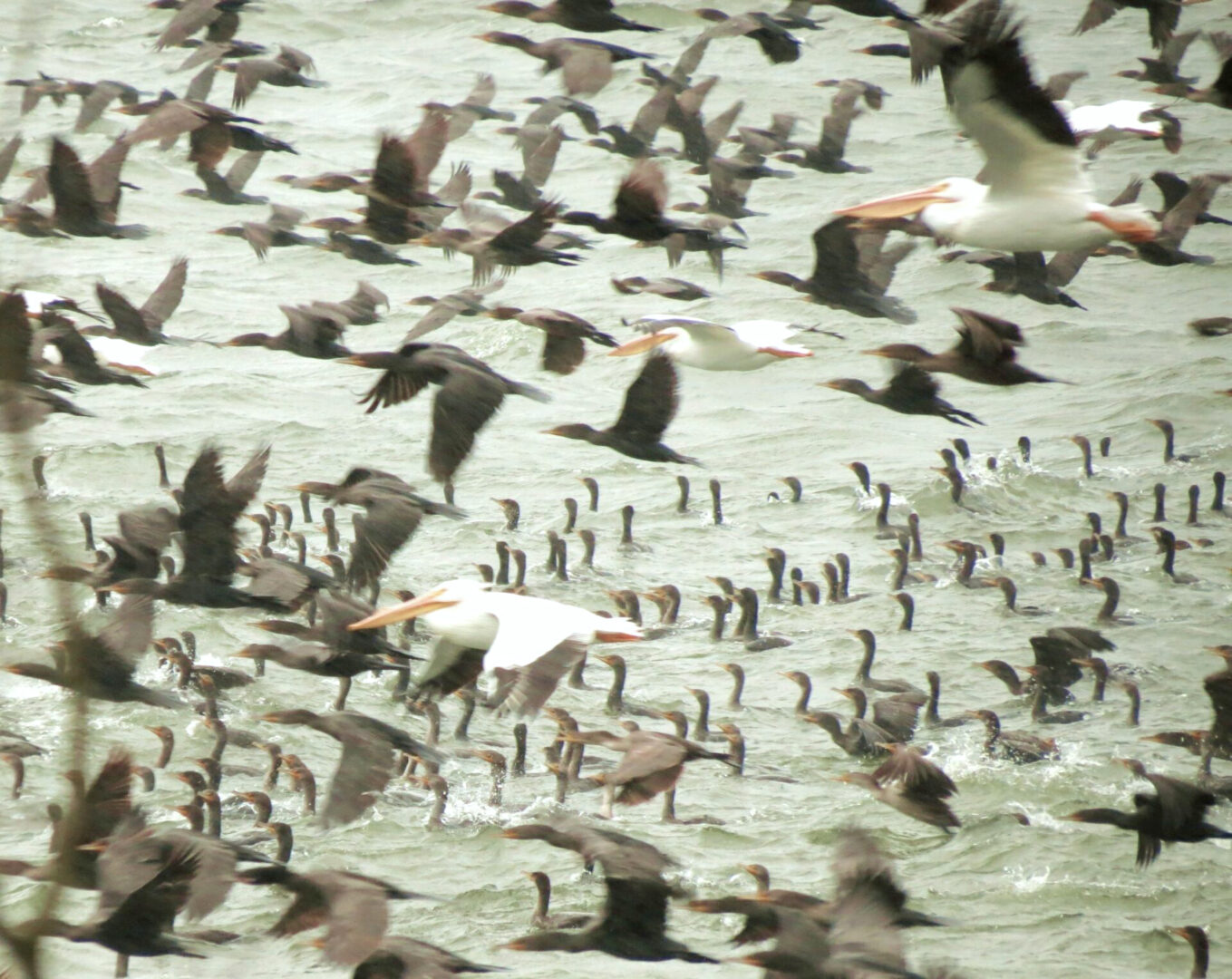
A raft is a fascinating hunting community. Each bird species has a slightly different way of catching fish, filling a different hunting niche so they don’t compete with each other. This is the key for their willingness to hunt together. It is a collective unity and harmony. And there may be a feeling of safety while hunting in a large group.
The magnificent white pelicans drop their long necks down, dip their heads underwater, open their beaks and patiently wait for near-surface fish to swim in. They don’t dive or swim under water, and can hold up to three to four gallons of water in their enormous expandable throat pouches. At times it seems like they are drowning because they hold their heads underwater for so long!
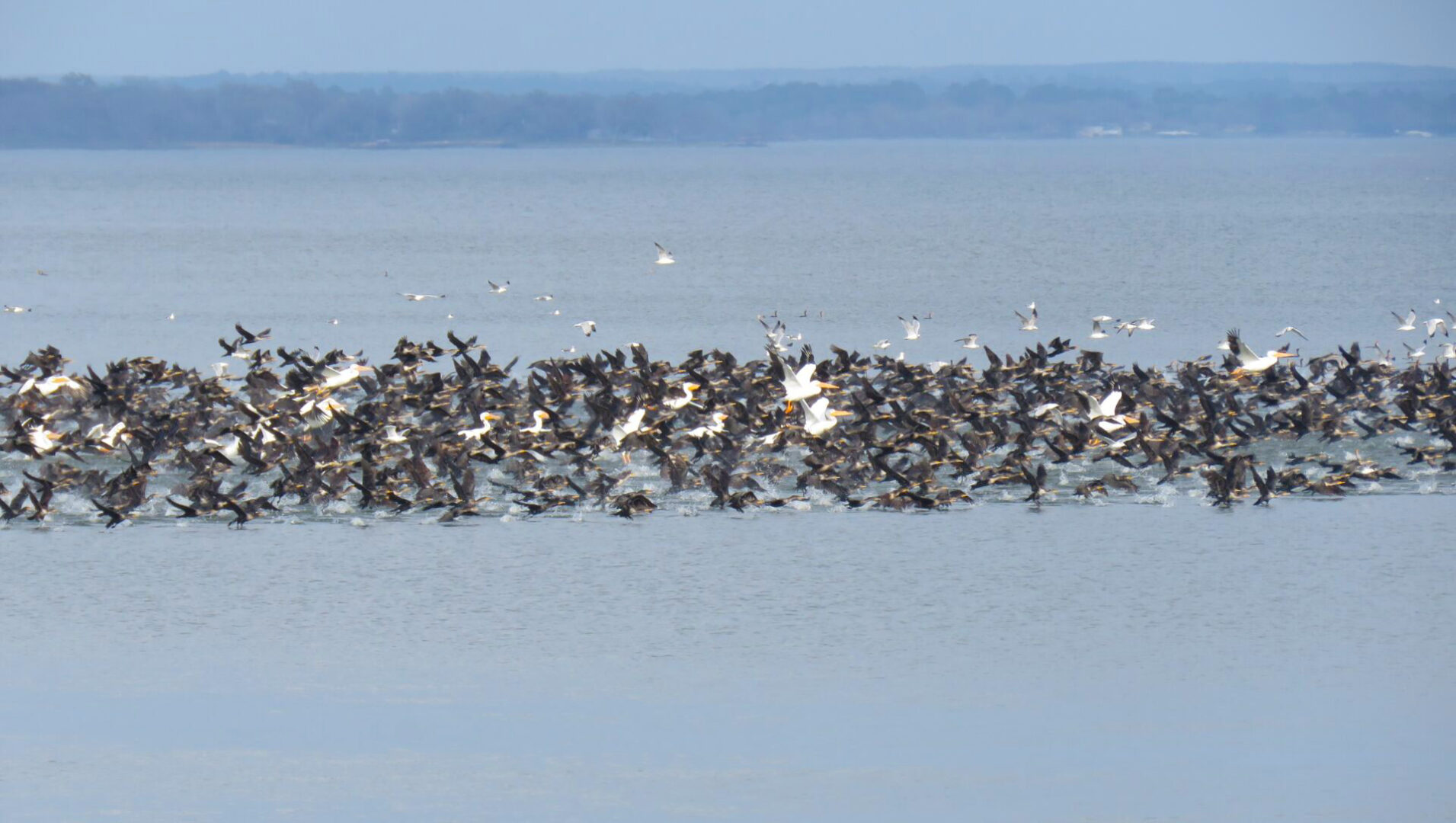
The athletic dark cormorants paddle along and do graceful surface dives, arching their long necks as they curve into the water. They usually pop back up in 10-15 seconds, but can stay down much longer. Their underwater aquatics are a marvel as they dart, dodge and easily swim 30 feet below the surface, all while actively chasing the deeper fish.
Gray colored terns join in the fishing events with a splash! To catch fish a tern smashes into the water so hard it seems as if their wings will break off! This is known as plunge-diving. They have very hollow bones and air sacs which allow for compression as they hit the water. On their diving runs they stun and catch small surface fish.
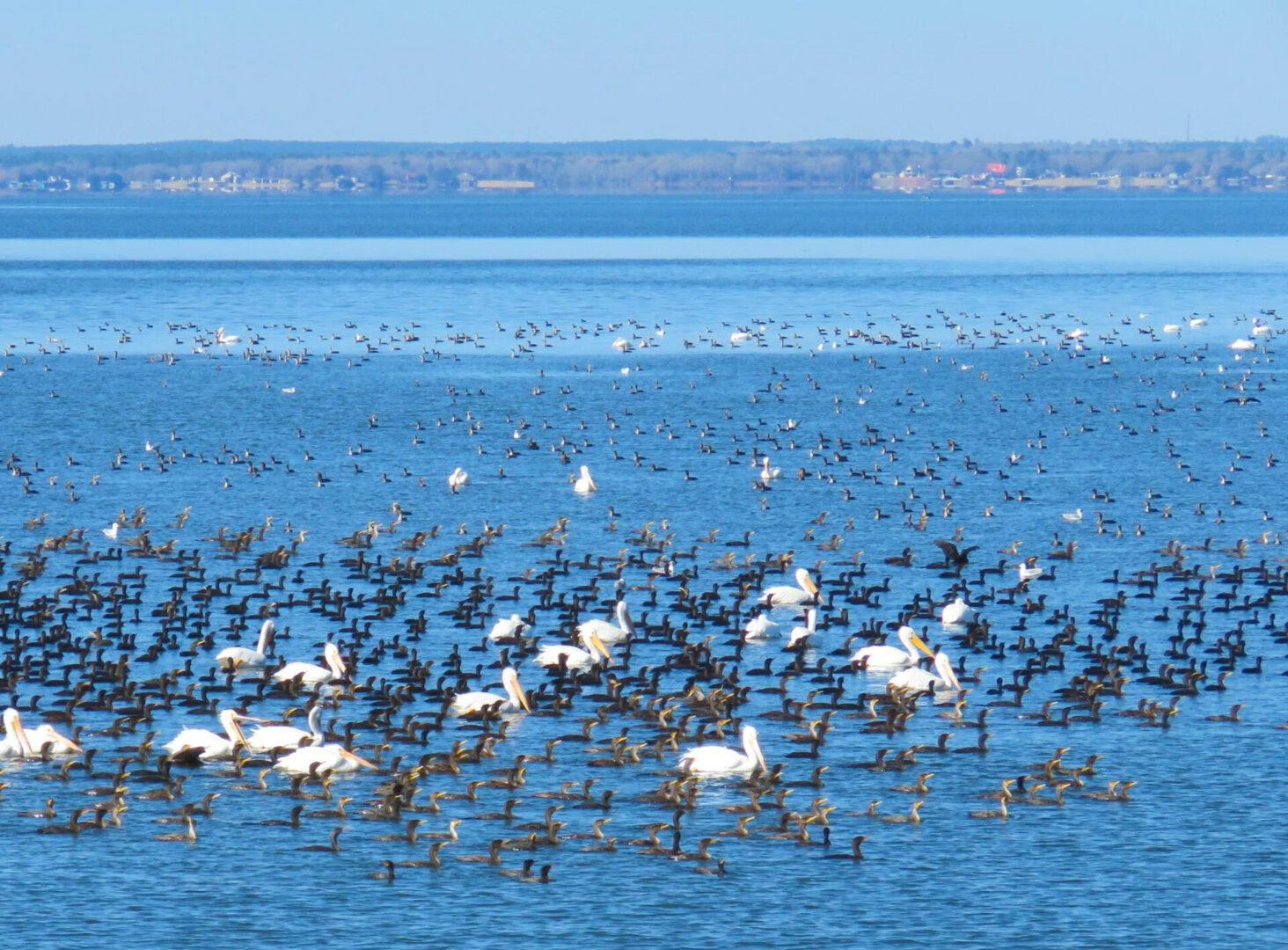
The gray-white gulls are the noise making moochers – squawking, crying and chortling throughout the hunt. They fly around and pester the other birds, trying to distract them. On the fly they will steal and scavenge bits of fish from other birds.
Just like people these birds of different species, sizes and colors all pull together in a communal way when it is beneficial. Like people, they use different talents to bring in their daily bread. Some are more athletic and active. Some are more regal and passive. And just like some people, there are also the squawkers and tricksters on the fringe, ready to take advantage.
Learn more about the incredible nature in our area by joining a chapter of the Texas Master Naturalist organization. To find a chapter close to you, or to read about the state program, go online to
https://txmn.tamu.edu. Volunteer and get involved!
